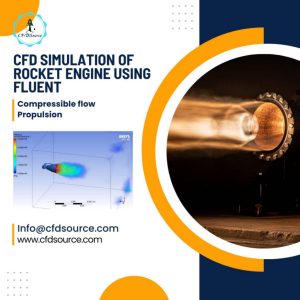Beyond the Blueprint: Why Simulating Wind is Non-Negotiable in Modern Urban Design
Architectural blueprints are beautiful, but they’re silent on one crucial, invisible force: wind. For years, we relied on wind tunnel testing and simplified building codes, but those tools have their limits, especially with today’s complex architectural forms. This is where computational fluid dynamics, and specifically our team’s [CFD simulation services], have become an essential part of the design process. When we talk about CFD for Wind Engineering and Urban Planning, we aren’t just creating colorful graphics; we’re stress-testing a design against reality before a single shovel hits the ground.
From Pedestrian Comfort to Structural Safety: The Tangible Risks of Ignoring Aerodynamics
Ignoring wind flow isn’t a minor oversight; it’s a major liability. It can lead to everything from a public plaza being rendered unusable by violent gusts to rattling windows that drive occupants crazy. In the worst-case scenarios, it’s about structural failure. Unforeseen pressure hotspots can lead to cladding issues or, in extreme events, facade panels ripping off. These are not theoretical risks; they are real-world consequences that good engineering aims to prevent. It’s about liability.
Case in Point: How Unforeseen Wind Tunnels Can Derail a Multi-Million Dollar Project
I remember a project from several years back—a stunning mixed-use development with two high-rises flanking a central pedestrian walkway. On paper, it was perfect. But after construction, the walkway became a notorious wind tunnel, especially in the winter months. Retail tenants complained of doors being blown open and customers avoiding the area entirely. The remediation cost’s were staggering, involving the installation of large, expensive baffles and extensive landscaping that wasn’t in the original budget. A CFD study beforehand would have caught this channeling effect for a fraction of the cost.
The Core Applications: What Problems Can CFD Solve in Your Urban Project?
So, what exactly do we look for when we run these simulations? It’s not one single thing. We’re interrogating the design from multiple angles to answer specific questions for architects, structural engineers, and developers. The main goals usually fall into one of these buckets:
Pedestrian Level Wind (PLW) Analysis: Ensuring Safe and Comfortable Public Spaces
This is a big one. We simulate wind speeds at 1.5 meters above the ground—the average person’s height. We then map this against established comfort criteria, like the Lawson criteria, which classifies wind conditions from “Long-term sitting” to “Uncomfortable” or “Dangerous.” This lets us pinpoint exactly which corners of a plaza or which sidewalks will be problematic. 🚶♂️ Is that outdoor cafe seating area actually pleasant, or will patrons be chasing their napkins down the street? PLW analysis gives you the answer.
Structural Wind Loading: Calculating Precise Façade Pressures Beyond Building Codes
Building codes are great, but they are generalized. They provide pressure coefficients for standard, boxy shapes. What about your unique, undulating facade or complex roof geometry? A code can’t accurately predict the specific vortex shedding or pressure hotspots on a non-standard form. This is where we apply the same principles used for [analyzing aerodynamic forces in vehicle design]. CFD gives us a detailed pressure map across every square meter of the building surface.
Here’s a quick comparison of the two approaches:
| Feature | Code-Based Wind Analysis | CFD-Based Wind Analysis |
| Specificity | Generalised, based on standard shapes | Highly specific to your exact geometry |
| Data Output | Overall structural loads | Detailed pressure maps, hotspot identification |
| Optimization | Often leads to over-engineering (conservative) | Allows for material and cost savings by reinforcing only where needed |
| Façade Cladding | Provides limited guidance | Essential for calculating precise loads on panels, glass, and fixings |
This level of detail is not just academic; it directly impacts the cost of the curtain wall and the structural frame.
Pollutant Dispersion and Air Quality: Designing Healthier Cities
Ever wonder where the exhaust from an underground parking garage or a nearby highway actually goes? We can simulate it. By releasing virtual tracer particles into the CFD model, we can track how pollutants from sources like traffic, industrial vents, or even a building’s own HVAC exhaust will disperse or, more worringly, concentrate in public areas or near fresh air intakes of adjacent buildings. This is critical for meeting environmental standards and simply creating healthier spaces to live and work.
Natural Ventilation & Microclimate Optimization: Reducing Energy Costs and Heat Island Effects
A smart design works with the wind, not against it. We can analyze how wind patterns can be channeled to provide natural ventilation, reducing the reliance on mechanical systems and cutting operational costs. This data allow architects to strategically place windows, vents, and atriums. Furthermore, by understanding airflow, we can help mitigate the Urban Heat Island effect by optimizing the placement of green spaces and water features, a process that shares principles with [how CFD is transforming renewable energy projects] by leveraging natural forces.
The CFDSource Methodology: From Your CAD Model to Actionable Engineering Insights
Alright, so how do we actually do this? Getting from a 3D model to a reliable wind simulation isn’t about pushing a button. Over my 15 years in this field, I’ve seen how cutting corners on the setup phase leads to useless results. It’s a meticulous process. Our approach is built on a foundation of rigor that ensures the final data is something you can confidently base critical design decisions on. It’s not magic; it’s just solid engineering methodology.
Step 1: Defining the Physics – It Starts with the Right Atmospheric Boundary Layer (ABL) Profile
First things first, we have to replicate the real-world atmosphere in the simulation. The wind doesn’t just hit a building at one constant speed. It has a profile—it’s slower near the ground due to friction and faster at higher altitudes. This is called the Atmospheric Boundary Layer (ABL). We don’t just guess this; we model it with a logarithmic or power-law profile based on the surrounding terrain type (e.g., open country, suburban, or dense urban). Getting this detail wrong at the inlet is a rookie mistake that invalidates everything that follows.
Step 2: The Art of Meshing Complex Geometries – Why Our Poly-Hexcore Mesh Strategy Delivers Accuracy and Speed
This is where the real craft comes in. The “mesh” is the grid of millions (sometimes billions) of tiny cells we break the air volume into. A poor mesh is the number one cause of bad CFD results. We use a hybrid meshing strategy called Poly-Hexcore. We use efficient, structured hexahedral cells in the far-field and highly adaptive polyhedral cells close to the complex building surfaces. 💻 This gives us the best of both worlds: accuracy where it matters most (around your building) and computational speed everywhere else. It’s far more effective than the generic tetrahedral meshes some services use.
Step 3: Choosing the Right Solver – When to Use RANS vs. Advanced LES Models
Not all turbulence models are created equal. The choice depends on the project’s specific goals and budget.
- RANS (Reynolds-Averaged Navier-Stokes): This is the workhorse for most engineering applications like calculating overall wind loads and identifying major flow patterns. It’s robust and computationally efficient. Models like k-epsilon or k-omega SST fall into this category.
- LES (Large Eddy Simulation): When you need to understand the transient, chaotic nature of wind—like gusting in a plaza or wind-induced noise—LES is the tool. It’s computationally expensive but captures the physics with much higher fidelity. It’s a bit like the difference between a photograph and a high-definition video. This level of detail is akin to the precision required when modeling [complex flows within the biomedical field].
Common Pitfalls in Urban Wind Simulation (And How Our Experience Helps You Avoid Them)
You can have the best software in the world, but experience teaches you where the traps are. We’ve seen them all.
The “Garbage In, Garbage Out” Trap: The Critical Role of Accurate Boundary Conditions
I can’t stress this enough. The ABL profile is just one boundary condition. We also have to correctly define the outlets, the ground roughness, and the “top” of the simulation box to ensure they don’t artificially reflect pressure waves back into the domain. A common error is making the simulation domain too small, causing the boundaries to interfere with the airflow around the buildings of interest and producing completely wrong pressure values.
Underestimating Domain Size: Why Simulating a Single Building in Isolation Leads to Flawed Results
A building doesn’t exist in a vacuum. The airflow it experiences is heavily influenced by the surrounding buildings, topography, and structures. Simulating your skyscraper by itself is a fundamental error. We always include a significant portion of the surrounding urban context—typically a radius of at least 5 to 10 times the building height—to capture these crucial upstream and downstream effects. It takes more computational power, but it’s the only way to get results that reflect reality.
The Validation Gap: How We Correlate Our CFD Results with Wind Tunnel Data and Empirical Studies
How do we know our simulations are right? Trust, but verify. For critical projects, we often validate our CFD models against established experimental data, such as the AIJ (Architectural Institute of Japan) wind tunnel datasets for standard building shapes or other published academic papers. This process of cross-referencing our virtual results with physical tests builds an immense amount of confidence in the outcomes, a practice we’ve honed through our work on projects where failure is not an option, like in the [aerospace and defense sector].
A CFDSource Case Study: Optimizing the Master Plan for a Mixed-Use Development
(H3) The Challenge: Mitigating High Wind Speeds in a Central Plaza Surrounded by High-Rises
We worked with an architectural firm on a master plan that had a beautiful, open central plaza. Initial CFD wind simulations showed that due to downwash from two adjacent towers, wind speeds at pedestrian level frequently exceeded comfort and even safety thresholds. The client was concerned they’d have to scrap the open plaza concept entirely.
Our CFD-Driven Solution: Strategic Placement of Greenery and Architectural Elements to Reshape Airflow
Instead of a complete redesign, we ran a series of iterative simulations. We tested the aerodynamic effect of adding rows of mature trees, porous screens, and even reshaping a low-rise canopy at the plaza’s edge. The final simulation showed that a combination of strategically placed tree clusters and a slightly larger canopy could disrupt the downwash and reduce average wind speeds in the plaza by over 60%, bringing them well within the “comfortable for sitting” range. This saved the core design feature of the project.
Partnering for Success: How to Integrate CFD Analysis into Your Design Workflow
Integrating CFD shouldn’t be a last-minute check. The real value is unlocked when it’s part of an iterative design loop. Bring us in early. We can test initial massing models to guide the fundamental shape and orientation of buildings, then refine the analysis as the design develops. This proactive approach saves immense amounts of time and money compared to fixing wind-related problems after the design is already “finalized.” Our work in CFD for urban planning is ultimately about collaborative problem-solving, turning an invisible force into a known, manageable design parameter.


